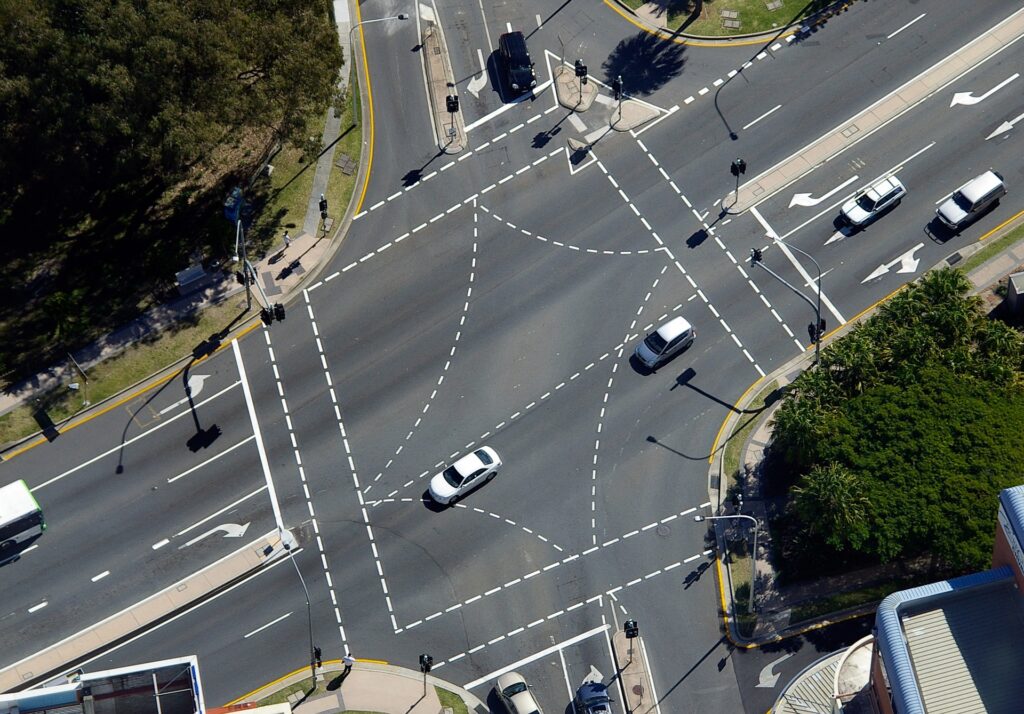It’s critical for pedestrians and drivers alike to be aware of mobility equipment users, to ensure all Australians enjoy path and road safety. With an increasing number of mobility scooter users in our midst, growing at an estimated 9% annually, it’s increasingly important to understand how to navigate spaces alongside them.
We share tips below on how to be considerate of mobility scooter users when you’re driving your car…
Table of contents
Mobility scooter usage on the rise
For many Australians, mobility equipment represents their freedom. It often provides a lifeline to the outside world for people who may otherwise be housebound and isolated from society.
As mentioned, we’ve seen an increase in the number of scooters and wheelchairs in our communities in recent years. This is mostly driven by Australia’s ageing population – read more about this here. However, people of all ages use them.
For every user, no matter what their age, mobility scooters are easy to use and safe… when they and those around them are obeying pedestrian and road safety rules.
While the value scooters bring to people’s lives is clear to see, it’s important for mobility equipment users, pedestrians and drivers alike to be aware of one another to ensure road safety.

Top tips for keeping mobility scooter users safe
In this article we focus on how vehicle drivers can help keep mobility equipment users safe. The most important thing is to always look out for mobility scooters and when doing so be aware, be patient and be considerate. Let’s explore each of these below.
1. Be aware
There’s a reason this is the first big tip. You can’t help keep something safe if you’re not aware it’s there! So:
- Keep an eye out for mobility equipment as you go about your day.
- Double check footpath traffic when reversing your car, particularly from driveways.
- If you encounter a scooter or wheelchair on the road, slow down and allow at least a metre gap when passing them in your car.
- This is a given – avoid distracted driving. The majority of accidents happen when you aren’t paying attention to driving safely. While behind the wheel, make sure your only focus is driving. It’s more important to keep your passengers, mobility scooter users and other drivers safe than answering a call, eating a snack or exploring your music playlist.
- Make sure your car’s serviced. Keeping your car in good shape is important because if you don’t change the engine oil, repair worn tyres and fix broken headlights and mirrors, you may breakdown without warning and/get into an accident.
Read our customer story about a mobility scooter crash.
2. Be patient
Patience is a virtue, with yourself as a driver and with all pedestrians, including mobility equipment users. So:
- Give mobility equipment users plenty of time to cross the road. They’re considered pedestrians in the eyes of the law, hence must use footpaths wherever possible, and they’re only allowed to do 10km/hour.
- Just like you would other pedestrians, be prepared to give way to scooters and wheelchairs if the footpath narrows or is under construction.
- Never push yourself when driving long distances. Practise patience with yourself and with others. Whenever you feel tired, stop. The effects of driving while tired have been compared to those of driving while drunk. The best thing you can do if you’re tired is to stop and rest.
- Again, when passing a mobility scooter on the road, slow down and leave at least a metre gap.

3. Be considerate
A driver’s sense of responsibility on the road is paramount in keeping other road users in mind. Unless you’re careful and considerate, the vehicle you’re controlling can cause devastating damage to people around you. So:
- Before overtaking or turning off, indicate and do so well in advance. Mobility scooter users shouldn’t be uncertain about a driver’s intentions and sudden changes in direction endanger them as well as other pedestrians and road users.
- Bad weather makes driving more dangerous. Slow down! Drive carefully and be aware of what you can’t see.
- Make sure you obey the speed limit. Cars are made of metal, humans are not.
- Whenever you’re under the influence of alcohol or taking medications that might make you dizzy or lose concentration, do not drive.
Ways to be considerate outside your property
We thought it was worth mentioning that consideration should extend to where your home meets the footpath. As mentioned, this is the primary pathway used by people in mobility scooters. Three tips to get you thinking are:
- Don’t obstruct access – keep bins off the footpath.
- In the same vein, try to keep your car parked further up your driveway so people can use the footpath.
- Keep vegetation in front of houses maintained, so it doesn’t encroach onto footpaths.

Mobility scooter users are responsible for road safety too
If you’re a mobility scooter user, make sure you feel confident on your wheels when out and about. Part of this is owning the most appropriate scooter in the first place (read our how-tos for buying a mobility scooter).
Then, as you travel in your scooter, keep an eye on your surroundings. The ‘be aware’ factor is number one for you too, as it is for vehicle drivers. Help yourself stay out of harm’s way by following these scootering tips:
- Driving your mobility scooter requires you to remain alert at all times. Always be vigilant of what’s ahead, at the sides of you and behind you to ensure your safety and that of others.
- Which leads us to…. Be sure to use your mirrors, lights, and indicators frequently! Keep yourself visible to other path and road users at all times.
- It’s important to adjust your driving style according to the ground conditions, such as slowing down on wet and icy surfaces and increasing your braking time.
- Whenever possible, don’t stop or drive on inclines that exceed your scooter’s capabilities. You should plan your trip in advance and avoid uneven surfaces, dips, and potholes as much as possible.
- Try to wear bright colours and seriously consider attaching a flag to your scooter. For increased visibility during dull days and evenings, consider installing headlights. Read about other useful mobility scooter gadgets.
- Drive with only a few parcels at a time – don’t overload because you can more easily become unsteady or even tip over.
- Approach ramps and kerbs head-on and make turns slowly.
When you drive any vehicle, including a mobility scooter, you’re responsible for your own and others’ safety. With greater awareness through using all these simple steps noted above, we can create a safer and more pleasant environment for everyone.

Road rules for mobility scooters by state and territory
See which Australian road rules and regulations apply to mobility scooters in your area. We’ve provided a list of quick links so you can easily check them out:
Did you know we offer a FREE Blue Badge Insurance Mobility Scooter Guide. Learn more on how to safely use your mobility scooter (and wheelchair) in Australia.

More path and road safety tips for mobility scooter users
If you’re a mobility scooter user interested in staying as safe as possible, you might want to read some of our other popular articles. These include:
- Walkers, Riders Look Out When Scooters Are About
- Mobility Scooter Safety: How to Be More Visible
- Safety Checklist 101 for Mobility Scooter Users
- 15 Tips to Stay Safe on Your Scooter
- Footpaths a Concern for Mobility Scooter Users
Do you need mobility scooter insurance?
Find out more about protecting your wheels with mobility scooter insurance. If your scooter is accidentally damaged in an accident or is stolen, your insurance can help pay to get it fixed or replaced.
It’s free to get a quick mobility scooter insurance quote with Blue Badge Insurance. Just click below or call our experienced team on 1300 304 802.








